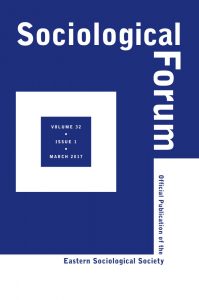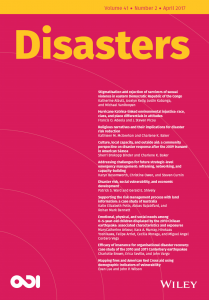Building Answers into Physical Spaces
 While venturing around today’s modern city-scape, it appears new design principles have been employed. Perhaps the construction of the contemporary urban environment has been increasingly swayed by social, economic, political, and environmental factors. Scholars, also recognizing the changing face of urban environments, have noted the rise of “New Urbanism” (Bohl, 2000). Consider the following:
While venturing around today’s modern city-scape, it appears new design principles have been employed. Perhaps the construction of the contemporary urban environment has been increasingly swayed by social, economic, political, and environmental factors. Scholars, also recognizing the changing face of urban environments, have noted the rise of “New Urbanism” (Bohl, 2000). Consider the following:
New Urbanism has been described as the most influential movement in architecture and planning in the United States since the Modernist Movement – Bohl
New Urbanism is the most important phenomenon to emerge in American architecture in the Post-Cold war era – Muschamp
Aside from becoming a new object of study for the academy, New Urbanism has firmly staked a position for itself within the planning community (Calthorpe, 1993). In addition to explaining the major design principles of New Urbanism and discussing its popularity, this entry will reflect on how New Urbanism attempts to curtail social, economic, and environmental issues through better design strategies.
The congress for the New Urbanism views disinvestment in central cities, the spread of placeless sprawl, increasing segregation by race and income, environmental deterioration, loss of agricultural lands and wilderness, and the erosion of society’s built heritage as one interrelated community-building challenge…we advocate ourselves to reclaiming our homes, blocks, streets, parks, neighborhoods, districts, towns, cities, regions, and environment (2001)
The excerpt above, taken from the Charter of New Urbanism, offers an initial look into the underlying principles of New Urbanism. Certainly, this movement advances planning that halts suburban sprawl and inner-city disinvestment while also advocating a renewed interest in rebuilding neighborhoods and towns. Therefore, the Charter of New Urbanism places heavy emphasis on the flowing ideas that shape the design principles and strategies: (1) Restoration of existing development both urban and rural; (2) Reconfiguration of sprawl into real neighborhoods; (3) Conservation of environment and preservation of neighborhoods; (4) Restructuring of public policy and development practices; (5) Development should be tailored to the needs of the community as well local history, climate, ecology, and building practice; and (6) Recognizing that physical solutions alone can not solve social and economical problems
Perhaps New Urbanism is another planning trend that is a product of its own time. Regardless, there is no doubt that New Urbanism has taken hold of planning policies and practices. Its attractiveness is rooted in the same principles of sustainability: mixed use, pedestrian orientated, diverse, compact, and transit friendly. Charles Bohl states that:
“New Urbanism is viewed as a strategy consistent with pedestrian qualities, mixed uses, interconnected streets, and urban housing types that have historically defined neighborhoods and that support concepts of sustainable development…” (2000)
As outlined above – albeit briefly – New Urbanism attempts to build a resolution of many social, political, economic, and environmental issues into the physical (re)development of space. Still, scholars have underlined a number of limitations. Perhaps the most critical of these is that environmental design does not address the why of social injustices, criminal events, or deviant acts. For instance, Bohl has offered a number of limitations regarding New Urbanism’s influence on crime:
1.) New Urbanism does not take into account wider social conditions or external factors like racism, inequality, low income populations, or economics
2.) It is not an economic development program
3.) It is not a social service program that will allow for daycare, affordable health facilities, or counseling
4.) May not be able to instill trust and cohesion in a diverse population that can for “real neighborhoods”
5.) Although New Urbanism is sensitive to displacement caused by gentrification, it does not provide a strategy to solve any type of displacement due to inner city redevelopment
6.) Although New Urbanism supports diverse human needs it does not accommodate for them
7.) It places little emphasis on inner city population needs
These limitations could lead to New Urbanism’s demise. Diversity among people has routinely been found to increase distrust, crime, fear, transience, and deviance while lowering community cohesion, communication, relationships, perception of safety, and moral (efficacy theory, pockets of crime, and social disorganization). Increased outside activities coupled with little social services could lead to increased crime, social disorder, and fear of crime (as found in social disorganization theory and routine activities theory). Larger social issues like racism, inequality, and lowered economics could very well be found in micro systems. Without assistance, strategies against displacement, and support for human needs crime could flourish (efficacy theory, social disorganization, pockets of crime, deviant places).
As such, movements similar to New Urbanism are seen as ill equipped to effectively reduce crime rates or other social ills. More pointedly, environmental development does not provide a strategy to combat such issues, it can only combat opportunities. Planning – it is argued – can then only acts as a secondary measure to manage populations, direct individual activities, or prevent crime. It is difficult however to dismiss all of what New Urbanism is setting out to accomplish and therefore it should be tested and researched further. As many in the field have stated, there is no one single way to combat all reasons for crime – we can only do our best. And for now, New Urbanism may be the best alternative to what is currently in place – only time will tell.
Read: Hess, D. (2008) Localism and the Environment. Sociology Compass, 2(2): 625-638.
Read: Sze, J. & London, J. (2008) Environmental Justice at the Crossroads. Sociology Compass, 2(4): 1331-1354.






1099-1328/asset/dsa_logo.jpg?v=1&s=e4815e0ca3064f294ac2e8e6d95918f84e0888dd)